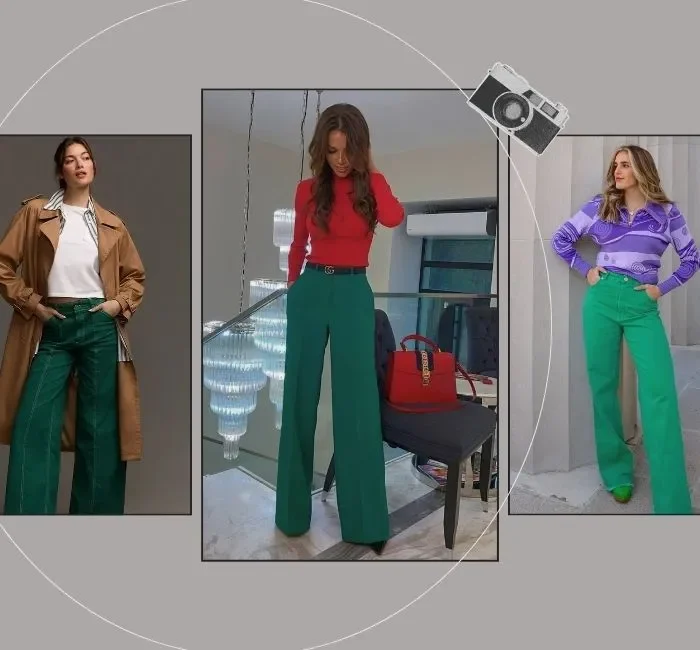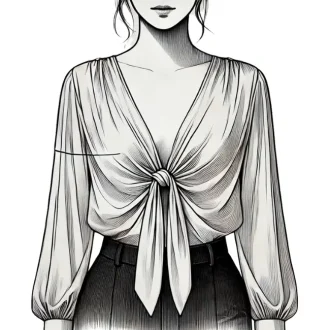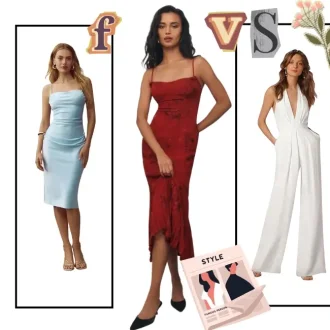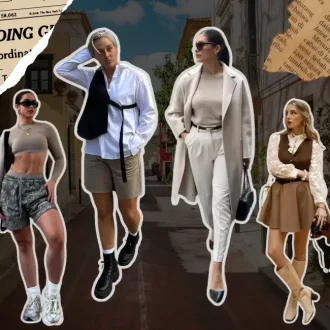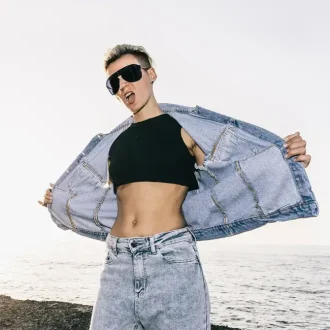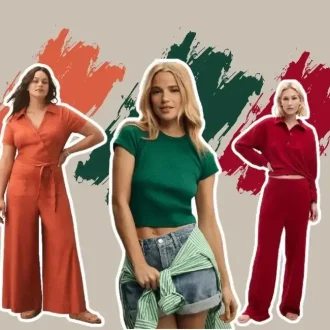Want to make your outfits pop? Discover the dazzling power of complementary colors!
Complementary colors, which sit opposite each other on the color wheel, create a high-contrast, vibrant look that can elevate any outfit. From bold, eye-catching ensembles to subtle yet impactful accents, using complementary colors in fashion is a game-changer.
Understanding and mastering complementary colors isn’t just for artists. It’s essential for anyone passionate about fashion.These dynamic color pairs can highlight your best features, add excitement to your wardrobe, and ensure you stand out with stylish confidence.
Let’s explore the world of complementary colors and how they can redefine your fashion choices.
Understanding Complementary Colors in Fashion

Complementary colors are a dynamic duo in the fashion world, capable of transforming any outfit into a head-turning ensemble. But what exactly are complementary colors, and how can you master them to enhance your style? Let’s dive in.
What are Complementary Colors?
Complementary colors are pairs of colors that are directly opposite each other on the color wheel. This opposition creates a high contrast, making each color appear more vibrant when paired together. Think of complementary colors as fashion’s way of balancing boldness and harmony.
The Color Wheel and Complementary Colors

The color wheel is a visual representation of colors arranged in a circle, showcasing the relationships between primary, secondary, and tertiary colors. When you look at the color wheel, complementary colors sit directly across from each other. This opposition is what gives complementary color pairs their striking and harmonious look.
Here are some primary examples:
- Red and Green: Think of the festive holiday vibe or a chic red dress paired with emerald accessories.
- Blue and Orange: Imagine a cobalt blue blouse paired with a burnt orange skirt – it’s a vibrant, eye-catching combination.
- Yellow and Purple: Picture a bright yellow top with deep purple heels – it’s bold, fun, and full of contrast.
Examples of Complementary Color Pairs
Red and Green
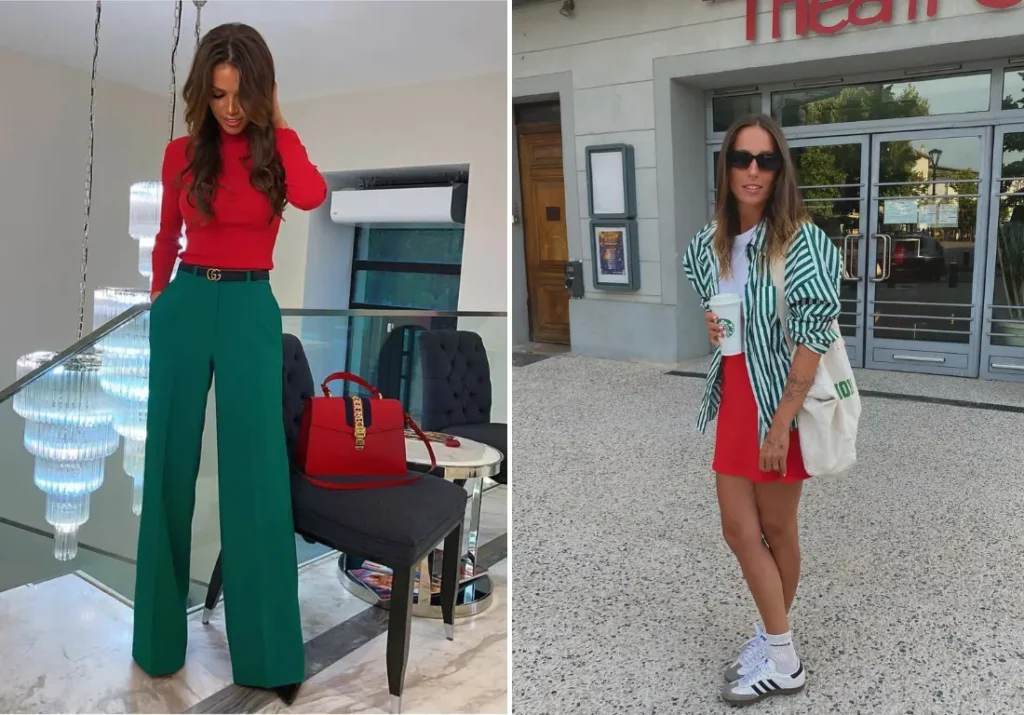
i.s.nesquik/carocolombani
- Fashion Tip: Pair a red blouse with green pants for a bold statement, or go subtle with a red accessory like a handbag or shoes against a green dress.
- Visual Impact: This combination exudes confidence and energy, perfect for making a statement.
Blue and Orange

- Fashion Tip: A blue dress with orange jewelry or a blue skirt with an orange top can create a dynamic look.
- Visual Impact: Blue and orange together are striking and lively, ideal for those who love to stand out.
Yellow and Purple
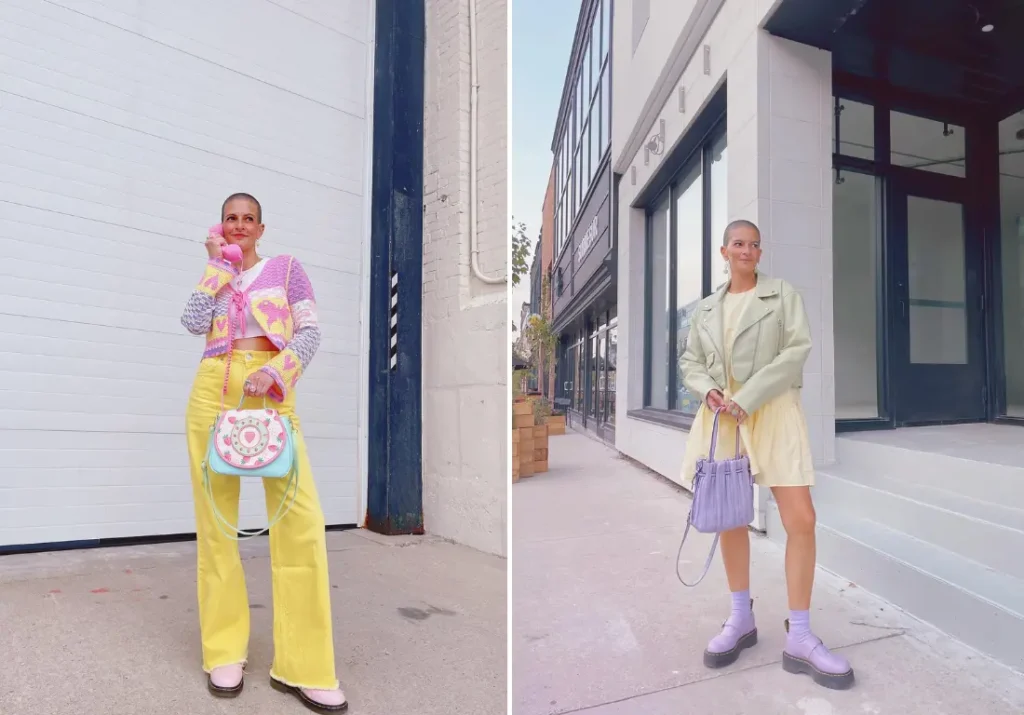
- Fashion Tip: Try a yellow blouse with a purple skirt or yellow shoes with a purple dress to create a fashionable flair.
- Visual Impact: This duo is vibrant and playful, great for adding a pop of color to your wardrobe.
Complementary colors are not just for making bold statements; they can also be used subtly to enhance your look. For instance, if you’re hesitant to dive into full-on complementary outfits, start with accessories. A pair of red earrings with a green dress or a blue belt with an orange outfit can add just the right amount of contrast without being overwhelming.
Why Understanding Complementary Colors Matters
Knowing how to use complementary colors can elevate your fashion game. These color pairs are perfect for creating balanced and vibrant looks that draw the eye. Whether you’re dressing for a high-stakes business meeting or a casual brunch, mastering complementary colors can help you stand out in any crowd.
Fashion is all about balance and harmony, and complementary colors provide the perfect tool to achieve this. So, next time you’re looking to add a bit of zing to your wardrobe, reach for those complementary colors and watch your style transform.
By understanding and incorporating complementary colors into your fashion choices, you can create outfits that are both striking and harmonious. Ready to experiment?
Benefits of Using Complementary Colors in Fashion
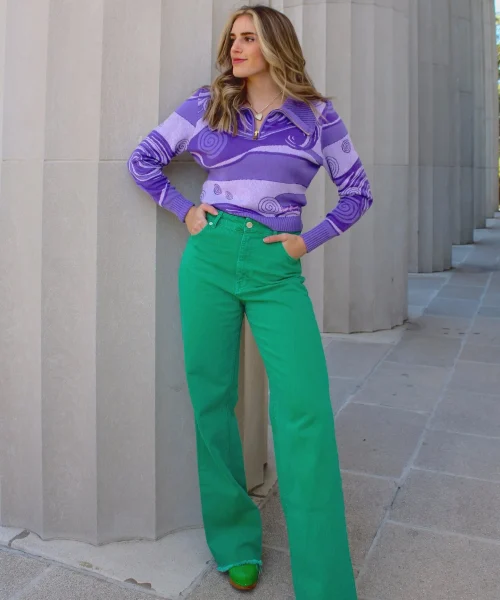
Complementary colors are the secret sauce for making your outfits pop and sparkle. Let’s dive into why these vibrant pairs are a must-have in your fashion arsenal.
High Contrast and Visual Appeal
Complementary colors sit opposite each other on the color wheel, creating a striking contrast that draws the eye. This high contrast is like a visual magnet, making any outfit instantly more appealing and dynamic. Picture a cobalt blue dress with bright orange heels. It’s impossible not to notice and admire.
Enhance Outfits and Create Eye-Catching Looks
Incorporating complementary colors into your wardrobe can elevate your style effortlessly. Whether you go bold with a full complementary outfit or start small with accessories, these colors enhance your natural beauty and make a memorable statement.
For instance, a green blouse with a red handbag can transform a simple look into something chic and unforgettable. Using complementary colors is all about balance and flair, helping you stand out with confidence and sophistication.
Tips for Incorporating Complementary Colors
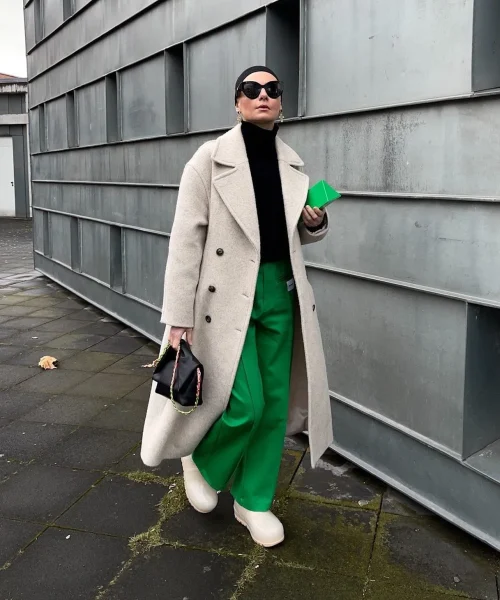
Incorporating complementary colors into your wardrobe can be both exciting and daunting. Here are some practical tips to help you master this vibrant trend while keeping your look balanced and stylish.
Balancing Boldness
When using complementary colors, it’s crucial to balance the boldness to avoid an overwhelming outfit. The key is to pair vibrant pieces with neutral tones.
Example: If you’re rocking a bright blue dress, tone it down with a beige blazer and nude pumps. This way, the bold blue stands out without overpowering your entire look. Another idea is to wear a vibrant yellow top with a neutral grey skirt. The grey helps to mute the boldness of yellow, creating a chic and balanced ensemble.
Neutral Anchors
Neutral colors like black, white, and beige are your best friends when it comes to anchoring complementary color schemes. They provide a perfect backdrop that allows your vibrant colors to shine without clashing.
Example: Consider a classic black dress paired with a red belt and green shoes. The black acts as a neutral anchor, letting the red and green pop without competing for attention. Another stylish option is a white blouse with a purple skirt and yellow handbag. The white blouse balances the outfit, making it sophisticated and eye-catching.
Small Pops of Color
Start by incorporating small pops of color through accessories. This method is an easy and less intimidating way to experiment with complementary colors.
Example: Add a pop of color with a bold blue necklace against an orange top. Or, spice up a green dress with red heels and a matching clutch. You can also use complementary-colored earrings or scarves to add that extra flair to your look without committing to large color blocks.
Examples of Complementary Color Outfits
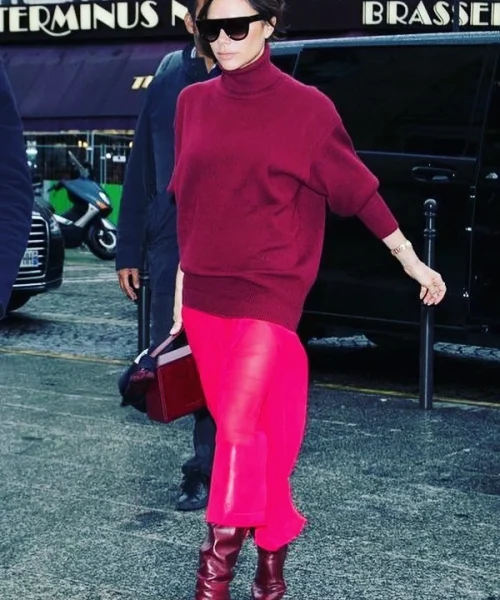
victoriabeckham
Embracing complementary colors in your wardrobe can elevate your style game to new heights. These color pairs are designed to create stunning, eye-catching looks that are both bold and harmonious. Here are some fabulous examples to get you inspired:
Red and Green
Red and green may remind you of holiday cheer, but this complementary pair can be chic and modern with the right styling.
Outfit Idea: Imagine a striking red dress paired with elegant green accessories. A red midi dress with a flattering silhouette can be complemented by a sleek emerald green clutch and matching heels. This combination is perfect for making a bold statement at a cocktail party or an evening event.
Visual Example: Picture a sophisticated red sheath dress with deep green statement earrings and a clutch. This look is both festive and fashionable, showcasing how these vibrant hues can work together seamlessly.
Blue and Orange
Blue and orange is a dynamic duo that brings vibrancy and energy to any outfit. This color combination is perfect for those who love to stand out.
Styling Suggestion: A cobalt blue blouse paired with a burnt orange skirt can create a stunning contrast that’s sure to turn heads. Opt for a blouse with unique details, such as ruffles or a bow, and a high-waisted skirt for a polished look.
Visual Example: Envision a chic blue top tucked into an orange A-line skirt, paired with nude heels to balance the bold colors. Add a touch of gold jewelry to complete the look. This outfit is perfect for brunch or a day out shopping with friends.
Yellow and Purple
Yellow and purple together create a lively and whimsical combination that’s sure to brighten up any day. This pair is ideal for those who enjoy playful and cheerful styles.
Tips on Wearing: Try a sunny yellow top with purple accessories. A soft, flowy yellow blouse can be paired with a deep purple handbag and matching heels. This look is perfect for a day at the office or a casual date.
Visual Example: Think of a bright yellow blouse with subtle detailing, paired with a sleek purple crossbody bag and purple ballet flats. The yellow top adds warmth and joy, while the purple accessories provide a sophisticated touch, making the outfit well-balanced and stylish.
Complementary Colors in Different Seasons
Adjusting complementary color schemes for various seasons allows you to stay fashionable and season-appropriate. Here’s how to tailor your complementary color pairings to suit each season beautifully:
Spring/Summer
In spring and summer, it’s all about embracing lighter, brighter hues that reflect the vibrancy of the warmer months.
Using Lighter, Brighter Complementary Colors:
- Red and Green: Opt for a fresh combination like a red sundress with mint green accessories. This lively mix is perfect for a garden party or a summer brunch.
- Blue and Orange: Think of a sky blue blouse paired with coral shorts. This pairing is both refreshing and eye-catching, ideal for a beach day or a casual outing.
- Yellow and Purple: Go for a pastel yellow top with lavender accessories. This subtle yet playful combination works wonderfully for a daytime event or a picnic.
Outfit Examples:
- A coral tank top with a light blue maxi skirt and white sandals.
- A mint green sundress with red flats and a straw hat.
- A lavender sundress paired with a pale yellow scarf and white sneakers.
Fall/Winter
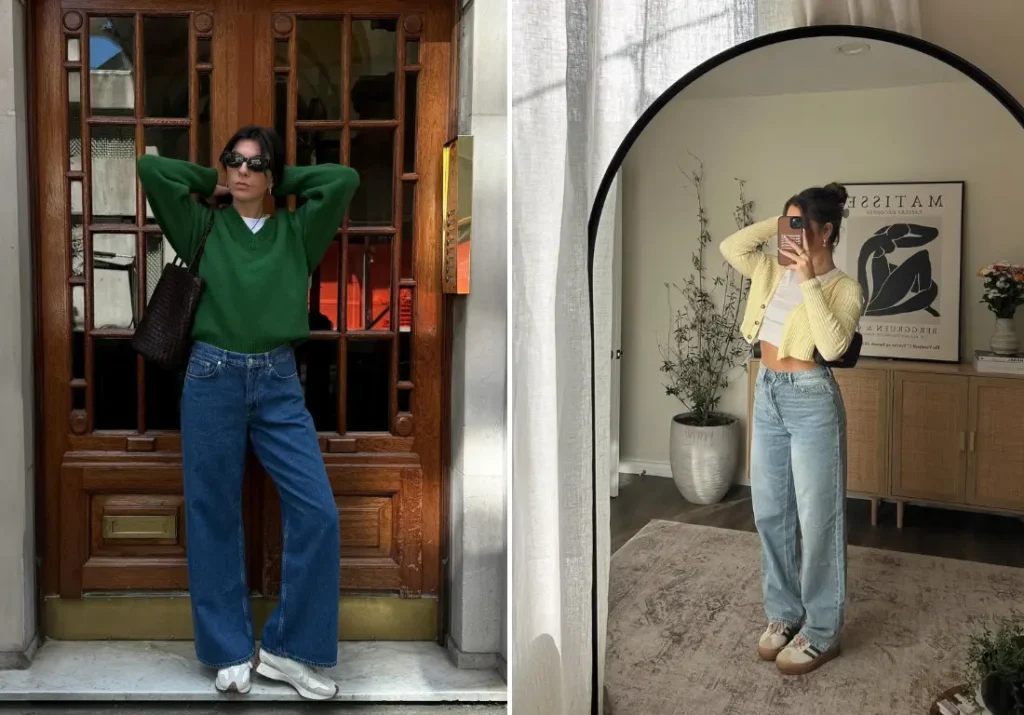
For fall and winter, deeper, richer tones are more suitable. These colors bring warmth and sophistication to your outfits.
Using Deeper, Richer Complementary Colors:
- Red and Green: Try a burgundy sweater with forest green trousers. This pairing is cozy and elegant, perfect for holiday gatherings or a winter date night.
- Blue and Orange: Think of a navy blue coat paired with burnt orange accessories. This rich combination adds a touch of drama and warmth, ideal for cooler weather.
- Yellow and Purple: Choose a mustard yellow sweater with deep plum pants. This combination brings a luxurious feel to your winter wardrobe, perfect for evening outings.
Outfit Examples:
- A forest green turtleneck with a burgundy midi skirt and ankle boots.
- A navy blue peacoat with burnt orange gloves and a scarf.
- A mustard yellow sweater with plum corduroy pants and brown boots.
Avoiding Common Mistakes
While complementary colors can create stunning looks, it’s essential to use them wisely to avoid fashion faux pas. Here are some tips to keep your outfits harmonious and chic:
Overuse of Complementary Colors
- Avoid Clashing: Too much of a good thing can be overwhelming. Avoid wearing large blocks of complementary colors together. Instead, focus on one statement piece and use the complementary color sparingly.
- Example: Instead of wearing a bright blue dress with an equally bright orange coat, choose one vibrant piece and keep the rest of your outfit neutral.
How to Avoid Clashing and Maintain Harmony
- Use Neutral Anchors: Incorporate neutral colors like black, white, beige, or gray to tone down the boldness of complementary pairs. This creates a balanced look without overwhelming the eye.
- Example: Pair a blue dress with a beige cardigan and orange accessories. The neutral cardigan helps to balance the bright colors, creating a cohesive outfit.
Tips on Using Complementary Colors in Moderation
- Small Pops of Color: Introduce complementary colors through accessories like shoes, bags, scarves, or jewelry. This allows you to enjoy the vibrant contrast without going overboard.
- Example: Add a pair of emerald green earrings to a red dress for a subtle yet striking pop of color.
Conclusion
Using complementary colors in your wardrobe can truly elevate your style. From creating high-contrast, eye-catching outfits to ensuring a harmonious balance with neutral tones, complementary colors offer endless possibilities for fashion creativity.
Remember, the key is to balance boldness and use neutral anchors to prevent overwhelming your look. Whether through small pops of color or daring full ensembles, experimenting with these color schemes can redefine your wardrobe.
Embrace the power of complementary colors and let your fashion choices speak with vibrant confidence.
